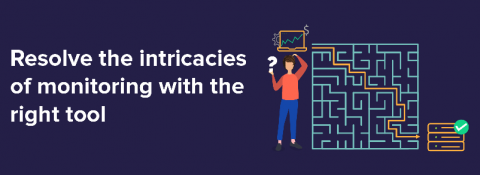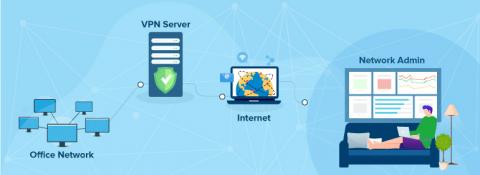Operations | Monitoring | ITSM | DevOps | Cloud
April 2020
Are third-party tools necessary to monitor your VMware infrastructure?
Monitoring every resource in your VMware environment is crucial to avoid sudden issues and ensure proper capacity planning. Although VMware offers its own monitoring suite, organizations frequently seek out third-party monitoring tools. The start of this trend dates back to the early days of vSphere, and it has only continued to increase. This is because third-party tools provide monitoring for the compute, storage, network, and analytics aspects of VMware environments, all from a single interface.
Instantly identify network issues with SNMP traps
IT automation for disk cleanup
The cloud ecosystem and how start-ups can effectively manage it
The cloud is becoming the vehicle for next-generation digital business and has emerged as the go-to platform for start-ups looking to thrive in today's highly dynamic and competitive market. Traditional on-premises IT solutions require higher investments in hardware, software licenses, maintenance, and training costs, which makes them ill-suited for start-ups.
Is server monitoring crucial for your business?
While some companies have never experienced a serious outage in services, it's still smart to invest in a monitoring tool for detecting server downtime. In doing so, it's possible to diagnose problems before they spiral out of control. Organizations may first consider free, open-source tools as a cost-effective alternative to paid enterprise versions. However, these free tools require deeper technical understanding to use them efficiently, with regular manual configurations and updates.
Save on your cloud spending: Five essential cloud cost management strategies that work
Digital transformation can be a rewarding endeavor for any enterprise, especially now considering the current remote work scenario. Often, organizations leverage the support of the cloud to set up robust digital transformation frameworks. The cloud offers scalability, making it easy to scale up or down. The cloud is also far more dynamic in terms of consumption—you pay for what you use.
Visualize network topology and deconstruct complexities with network mapping
Monitor VPNs-The secure gateway to your networks
While SaaS has made digital transformation a cakewalk, the virtual private network (VPN) takes credit when it comes to remote work. A lot of enterprises, as well as small and medium-sized businesses, continue their seamless operations remotely and securely through their VPN. VPNs enable private networks to communicate with the compute resources of public and shared networks.
Guidelines to quarantine your website from security threats
People around the world are struggling as the COVID-19 outbreak threatens the safety and security of so many individuals. These days, we all know how important it is to wear a mask, avoid handshakes, and take proper precautions to keep from getting infected. Unfortunately, coronavirus isn’t the only threat that businesses need to worry about right now. Malware unleashed by a black hat hacker can shatter a business’s reputation in seconds.











